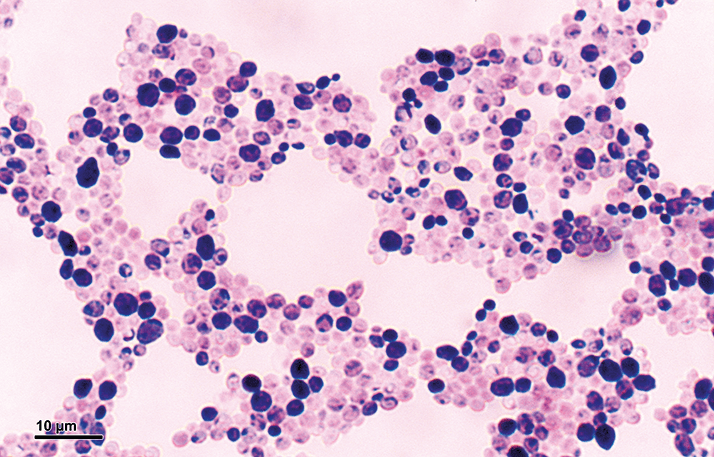
The best way to treat an antibacterial infection is to target the root cause. So why don’t we do it more often? “Detecting bacteria is a fairly lengthy process, so physicians tend to give patients a broad-spectrum antibiotic that wipes out all the bacteria as soon as possible instead of waiting to see which pathogen is actually causing the problem,” explains Xinyu Liu, assistant professor at the University of Pittsburgh, PA, USA. Liu, Sanford Asher, and their respective research groups, decided to develop a new method to identify pathogens by combining 2D photonic crystals with spectroscopy (1).
Liu decided to target carbohydrate structures found on the cell surfaces of microbial organisms: “We envisioned that if we could come up with a way to rapidly sense these microbial carbohydrate structures in a user-friendly manner, we could have a broadly applicable sensor for microbial pathogens,” says Liu. The sensor relies on a selective protein hydrogel coated with spatially-defined 2D photonic crystals (PC) – the latter being an area in which the Asher group has significant expertise. In the proof-of-concept paper, the hydrogel was embedded with Concanavalin A (ConA), a lectin protein that multivalently and selectively binds to poly-mannose (mannan) – a carbohydrate structure that is found on the cell surface of Candida albicans (the fungus responsible for oral thrush). Liu says, “While there are many ways to make a protein-engineered hydrogel, we simply used the protein as the polymeric backbone and cross-linked it to glutaldehyde. This worked out fantastically well (to my surprise at least)! The cross-linked Con A protein retains its secondary structure and was still able to recognize mannan efficiently.” When C. albicans is present, Con A binds to mannan to form crosslinks that shrink the protein hydrogel, which reduces 2D PC particle spacing, causing a blue-shift in diffracted light. The diffraction shifts can be visually monitored, measured with a spectrometer, or determined from the Debye diffraction ring diameter, and offer sensitivity of about 40 CFU/mL for C. albicans in aqueous solution. Although the platform is sensitive, a key limitation is the lack of true selectivity – the sensor detects any microbial organism with mannan on its cell surface. To that end, the team is working towards achieving absolute selectivity – by integrating antibodies, for example, with a focus on E. coli O157 for food poisoning, and MRSA – a persistent scourge of hospitals. Moreover, they are also working on increased response time, portability and reusability. Liu and Asher certainly have big plans for the future of their next-generation sensor: “If we can reduce the cost of its manufacture, it can be distributed to those in resource-poor countries, where the sanitation of water and food is problematic,” adds Liu.
References
- S A Asher et al., A photonic crystal protein hydrogel sensor for Candida albicans, Angew. Chem. Int. Ed. (2015). DOI: 10.1002/anie.201506205




